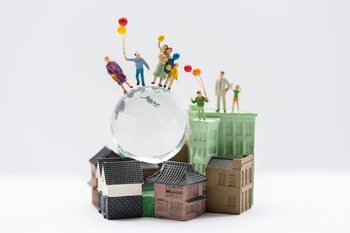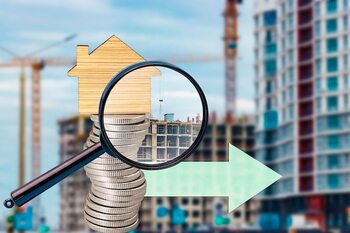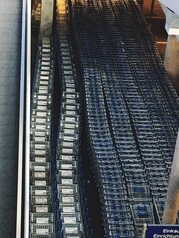The influence of architectural design on residential appreciation

The relationship between architectural design and residential appreciation is a fascinating topic that deserves exploration. In a constantly changing real estate market, properties with innovative and attractive designs not only ensure a better quality of life but also translate into a significant increase in their value. In this article, we will analyze how architectural elements impact buyers' perceptions and how these can influence the location and nearby services, turning common spaces into true gems of the market.
The role of architectural design in property valuation.
Architectural design plays a fundamental role in property valuation, as it involves not only building functional spaces but also creating environments that resonate with the emotions and aspirations of potential buyers. Elements such as space distribution, material selection, and integration with the natural surroundings can transform a simple house into a desired home. A well-thought-out design can maximize natural light, improve circulation, and offer attractive views, features that are highly valued by those looking to acquire a property. This attention to detail not only enhances the quality of life for its inhabitants but also elevates its status in the market.
Additionally, architectural design can influence how a property is perceived in relation to its location and the services available nearby. For example, a building that incorporates sustainable elements or modern technology may attract a specific segment of the market that values these features. Likewise, innovative projects that integrate community spaces or green areas can significantly increase the neighborhood's appeal and foster a sense of community among residents. In this context, properties designed with vision not only maintain their value over time but also have the potential to appreciate significantly due to their positive impact on the surrounding urban environment.
2. How aesthetics influence the purchasing decision
The aesthetics of a property play a crucial role in the purchasing decision, as first impressions are often decisive. An attractive architectural design not only grabs the attention of potential buyers but also evokes emotions and sensations. Well-lit spaces, with clean lines and a harmonious color palette, can create a sense of well-being and comfort. Thus, buyers tend to associate these aesthetic elements with a higher quality of life, which can justify a higher price in the market.
Furthermore, aesthetics is not limited solely to exterior design; it also extends to the interior of the home. The distribution of space, the chosen finishes, and the integration of natural elements are aspects that directly influence how buyers perceive the value of a property. A well-designed house can showcase unique features that highlight its distinctiveness compared to other similar offerings in the market. In this sense, a coherent aesthetic approach can transform an ordinary property into an extraordinary option, thereby increasing its residential value and attracting an audience willing to invest more in what they consider an ideal home.
3. Functional spaces: the balance between form and utility
The design of a home must go beyond mere aesthetics; functionality is key to maximizing residential value. Well-distributed spaces that allow for a natural flow between areas such as the kitchen, living room, and bedrooms not only optimize the daily experience of its inhabitants but also attract potential buyers. An environment where each element has its purpose and complements the architectural style can transform a simple residence into a desirable property. Careful planning of multifunctional spaces, such as home offices or outdoor entertainment areas, adds additional value to the property by responding to the changing needs of modern homeowners.
Moreover, the integration of sustainable and technological features in architectural design not only enhances the functionality of the space but also appeals to a growing base of consumers interested in energy efficiency and environmental care. Elements such as smart systems for controlling lighting and climate or eco-friendly materials can significantly increase the property's value. In this sense, functional spaces become a distinctive attraction that stands out among other homes in the market, making buyers willing to invest more in properties that offer both beauty and utility.
4. The importance of sustainability in modern design
Sustainability has become a fundamental pillar in modern design, transforming not only the way we build but also the way we value properties. Increasingly, buyers are looking for homes that are not only aesthetically pleasing but also minimize their environmental impact. Elements such as the use of recycled materials, renewable energy systems, and designs that maximize energy efficiency contribute not only to the well-being of the planet but also increase residential value. Sustainable homes are perceived as more valuable and desirable, which can translate into higher sale prices and greater demand in the market.
Furthermore, the integration of green spaces and vertical gardens within architectural design not only beautifies the property but also improves air quality and promotes a healthier lifestyle. Urban developments that prioritize sustainability often attract an environmentally conscious community, which can result in increased interest from potential buyers. This approach to more responsible design creates a powerful narrative around each property: a home designed to endure and contribute positively to both its inhabitants and the environment. Thus, investing in sustainability becomes not only an ethical choice but also a strategic one to enhance the long-term value of any residence.
5. Impact of the urban environment on residential value
The urban environment plays a crucial role in the valuation of residential properties. Factors such as accessibility, basic services, and green areas are determinants in the perception of a property's value. For example, an architectural design that harmoniously integrates with its surroundings can enhance the appeal of an area, attracting both interested buyers and tenants. Proximity to schools, hospitals, shopping centers, and public transportation not only improves the quality of life for residents but also increases the demand for those properties, thereby raising their appreciation.
Moreover, the impact of the urban environment extends to the lifestyle it offers. Urban areas that prioritize sustainable design and community spaces foster a sense of belonging among their inhabitants. These elements not only contribute to a better daily experience for residents but also create a desirable environment for future buyers. Consequently, properties situated in these contexts tend to maintain or increase their value more effectively in the face of changes in the real estate market, reflecting the importance of the urban environment in residential valuation.
6. Nearby services: How do they affect the price of a property?
Proximity to essential services such as schools, hospitals, supermarkets, and recreational areas can significantly influence property prices. Buyers often value the convenience offered by these nearby services, as they provide easy and quick access to what they need in their daily lives. A house located in a well-served area may not only be more attractive but also justify a higher price due to the quality of life it promises. In this regard, architectural design plays a crucial role in effectively integrating these services into the urban environment.
Additionally, properties with architectural designs that promote accessibility and connection to nearby services tend to attract more attention from potential buyers. For example, if a home is designed to facilitate public transport or is located near well-planned pedestrian routes, this can significantly increase its value. The perception of safety and well-being in these areas also contributes to raising residential property values, turning common spaces into desirable environments where people want to live. Thus, it is evident that both nearby services and architectural design intertwine to create a more valuable and competitive real estate offering.
7. Architectural trends that are redefining the real estate market
Current architectural trends are marking a before and after in the real estate market, transforming the way buyers perceive the value of a property. Among these trends is the focus on sustainability, where eco-friendly buildings are not only more aesthetically appealing but also promise lower energy costs and a reduced environmental impact. This growing awareness of sustainability has led developers to incorporate recyclable materials and energy-efficient technologies, resulting in properties that are increasingly valued by environmentally conscious consumers.
Another relevant trend is the integration of outdoor spaces in residential design. With the rise of remote work and the search for quality of life, properties that offer terraces, gardens, or balconies have a significant competitive advantage. These spaces not only expand the living areas but also promote a healthy and active lifestyle, allowing residents to enjoy the outdoors without leaving home. The inclusion of these elements in architecture not only addresses the current market needs but also significantly increases the value of properties as they are highly sought after by modern buyers looking for comfort and connection with nature.
8. Successful cases: projects that have increased their value thanks to good design.
One of the most prominent examples of how good design can increase the value of a property is the project "Casa en el Árbol," located in a wooded area near the city. This residential development, which combines modern architecture with sustainable materials, has not only managed to attract an eco-conscious audience but has also significantly improved its market valuation. The inclusion of open spaces, large windows that allow natural light to enter, and well-integrated green areas have led to the homes being sold at prices above the area average, making this project a benchmark within the sustainable residential segment.
Another successful case is the "Vistas Urbanas" complex, located in the heart of a metropolis. This project was characterized by its innovative and functional design that maximizes the panoramic view from each of its apartments. The implementation of smart home technology and well-designed common areas, such as gyms and shared terraces, has raised the perceived value among potential buyers. As a result, the properties have seen a notable increase in their appreciation compared to nearby traditional buildings, demonstrating that a user-centered architectural approach can radically transform real estate profitability.



